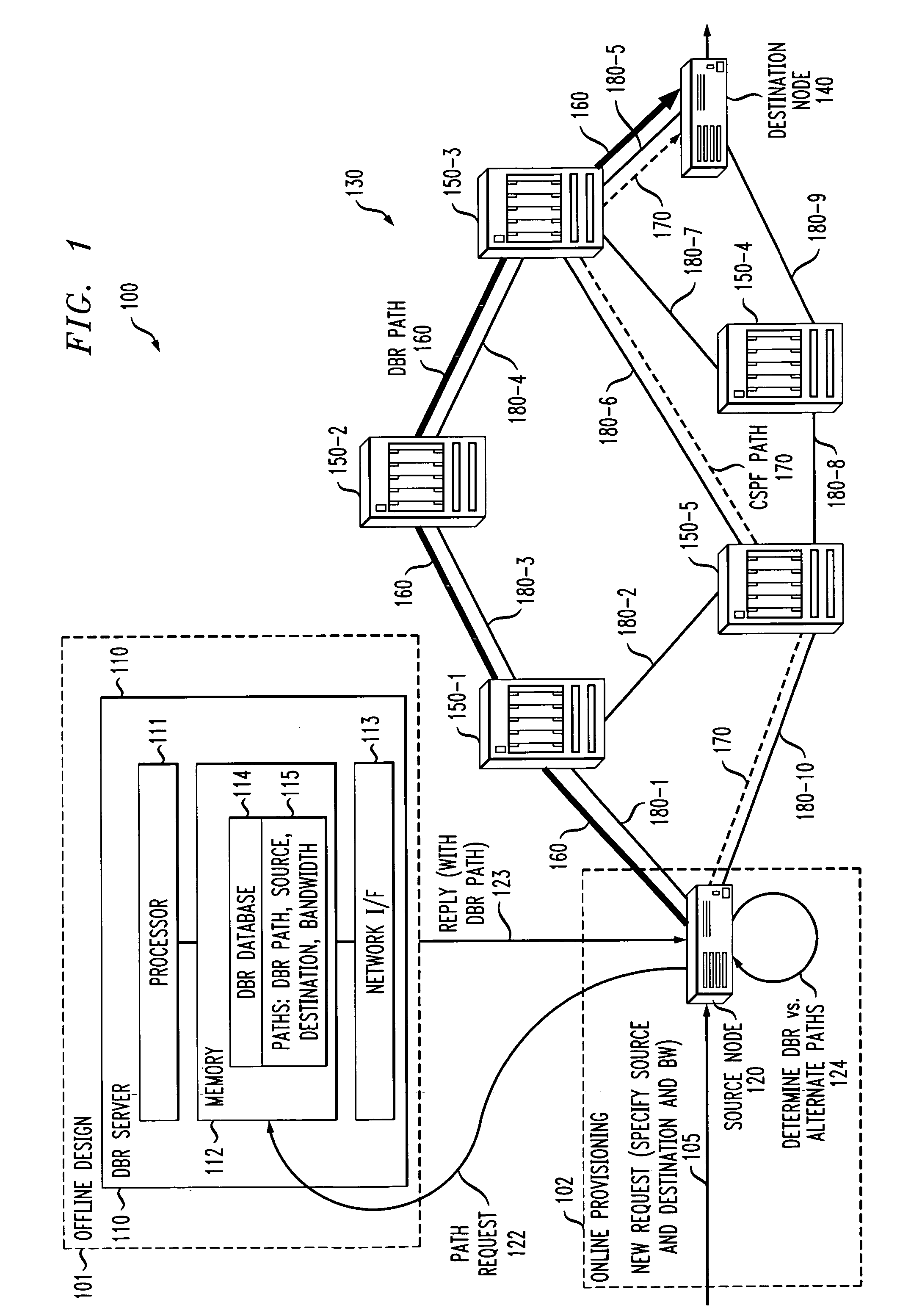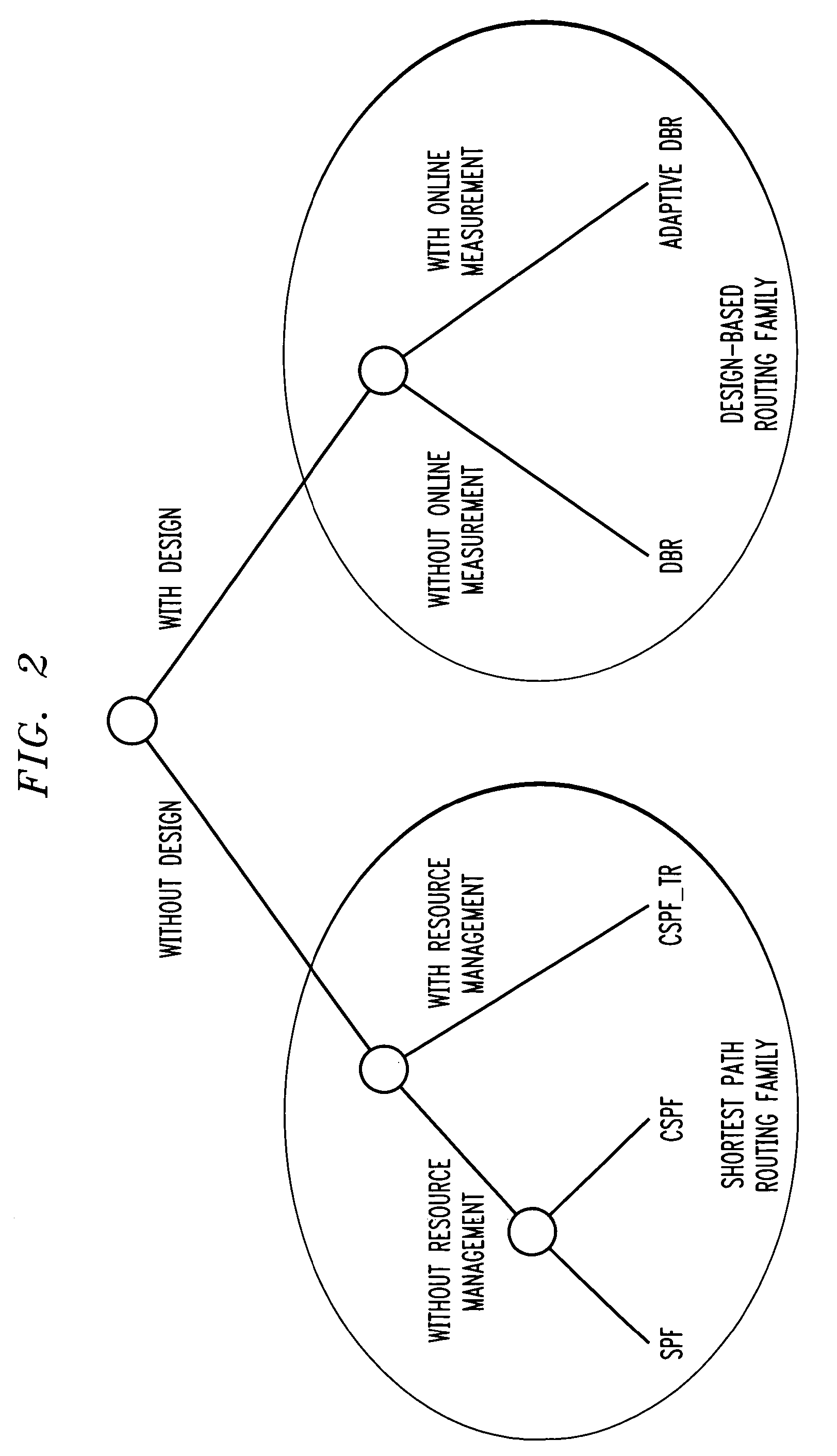Techniques for network traffic engineering
- Summary
- Abstract
- Description
- Claims
- Application Information
AI Technical Summary
Benefits of technology
Problems solved by technology
Method used
Image
Examples
Embodiment Construction
For ease of reference, the present disclosure is divided into the following sections: Introduction; Path Design with DBR; and Routing With Resource Management.
Introduction
Referring now to FIG. 1, a communication system 100 is shown. Communication system 100 comprises a DBR server 110 coupled to a network 130. Network 130 comprises a source node 120, intermediate nodes 150-1 through 150-5, edges 180-1 through 180-10, and a destination node 140. DBR server 110 comprises a processor 111, memory 112 and network interface 113. The source node 120, destination node 140, and intermediate nodes 150 could be routers, switches, or other types of network elements. For purposes of exposition, the source node 120, destination node 140, and intermediate nodes 150 will be considered to be label switch routers (LSRs) or have an LSR portion (not shown) in addition to other portions. Memory 112 comprises a DBR database 114. DBR database 114 comprises a number of paths 115, each path 115 having a...
PUM
 Login to View More
Login to View More Abstract
Description
Claims
Application Information
 Login to View More
Login to View More - R&D
- Intellectual Property
- Life Sciences
- Materials
- Tech Scout
- Unparalleled Data Quality
- Higher Quality Content
- 60% Fewer Hallucinations
Browse by: Latest US Patents, China's latest patents, Technical Efficacy Thesaurus, Application Domain, Technology Topic, Popular Technical Reports.
© 2025 PatSnap. All rights reserved.Legal|Privacy policy|Modern Slavery Act Transparency Statement|Sitemap|About US| Contact US: help@patsnap.com



